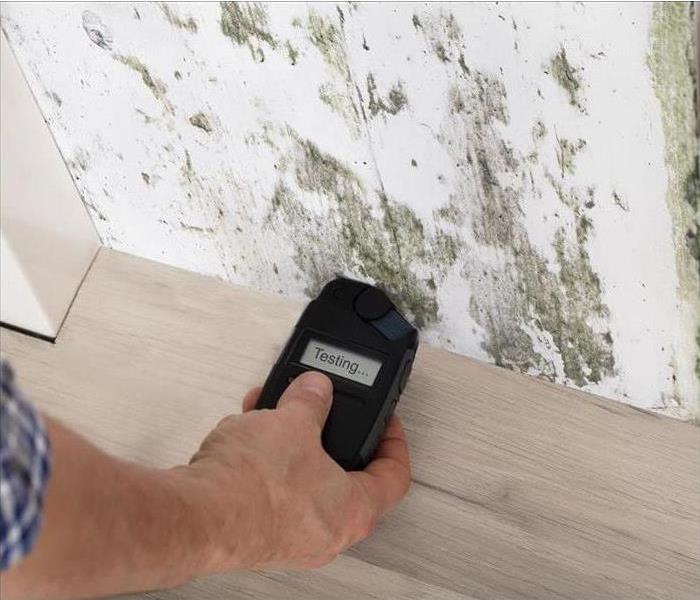How To Treat Mold
9/13/2023 (Permalink)
A musty odor in your commercial building in Layton, UT, is a clear sign of mold. What may not be clear is the visible presence of the fungus on your walls or ceiling. If you suspect you have mold but you can't see it, an indoor environmental specialist must test the building before remediation can take place.
6 Steps to Treat Mold
1. Detection
Some business owners try to locate problems themselves using a mold test from the local hardware store. The only thing this test will tell you, however, is that spores are present in the building, and that's always true. Any time the door opens, mold can enter on clothes, hair, and shoes. It doesn't become a problem until it concentrates and begins to grow on surfaces. Sometimes, you can't see the surfaces where it grows, though. Then you need a professional inspection.
2. Testing
A certified hygienist conducts tests on both surfaces and the air. These tests reveal more than just the presence of mold:
- Location of the greatest concentration of spores
- Type of mold present
- Air quality of the affected area
Once the testing is complete, the mold mitigation specialists know where to start.
3. Assessment
The report from the indoor environmental specialist is an essential part of the overall assessment process. It tells the remediation team members how large an area they need to seal off so that the mold problem doesn't spread any further in the building. From that point, they can create a plan of action for taking care of the issue. At this point, they should also be able to provide a general estimate to supplement your insurance claim.
4. Removal
One of the first things that technicians must do is tear out any unsalvageable material. If there is mold growth on any porous matter, such as drywall or industrial ceiling tiles, it cannot simply be washed away. The fungus on the surface isn't the only problem. When spores settle, tendrils called mycelia to reach down into the spaces beneath the surface to anchor the growth. Once this happens, the only way to get rid of it is to take the affected materials out altogether.
5. Retesting
After the growth has been removed, the remaining surfaces are cleaned and dried to prevent the problem from returning. Then the area must be retested. This crucial step of the process ensures that the actions taken by the mitigation team are effective and that no mold issue persists. Remediation must be completed before the structure can be rebuilt.
6. Restoration
The final phase is getting the building back to normal. New tiles and drywall are installed. Paint and wallpaper are matched to the existing space so that no one can tell where the problem occurred. The job isn't done until your building looks like there was never a problem at all.
If you suspect that you have mold in your building but you don't see any visible evidence, you should call an indoor environmental specialist. A professional test reveals what kind of problem you have and how big it is. This is exactly the information the mitigation team needs in order to do its job well.






 24/7 Emergency Service
24/7 Emergency Service
